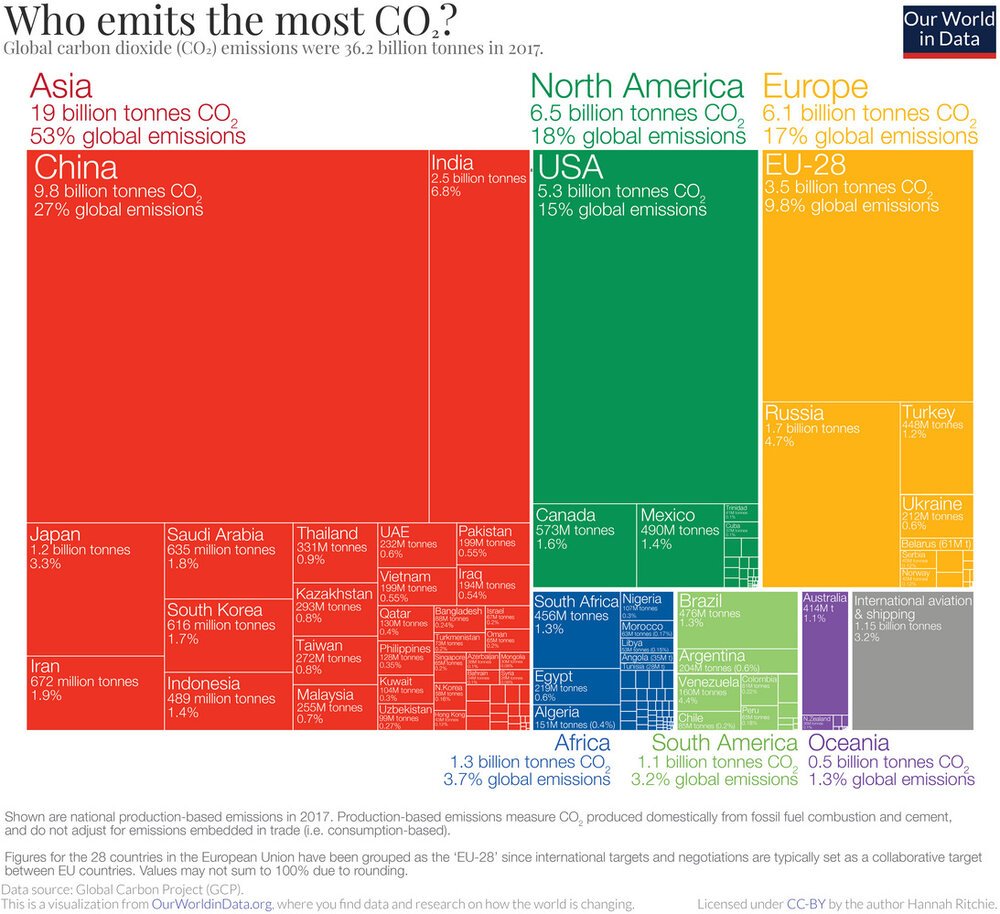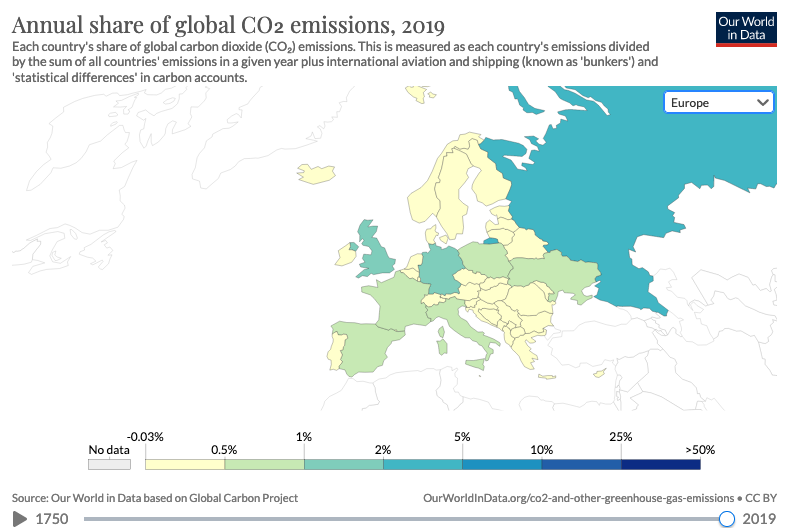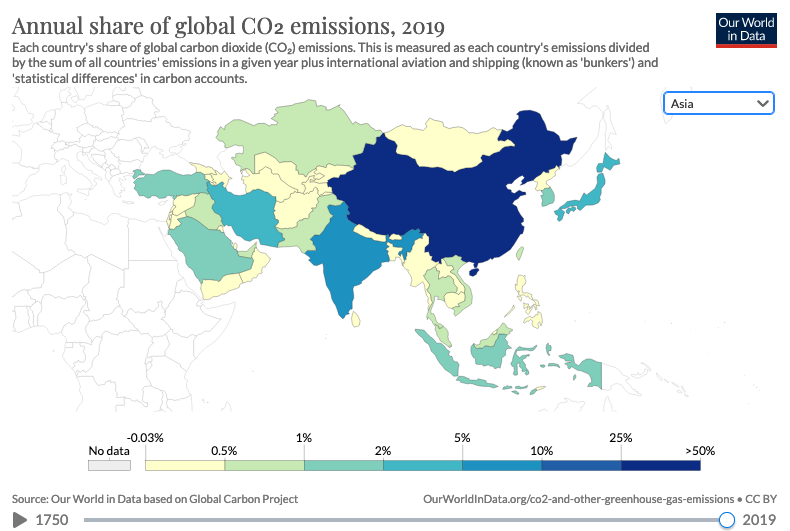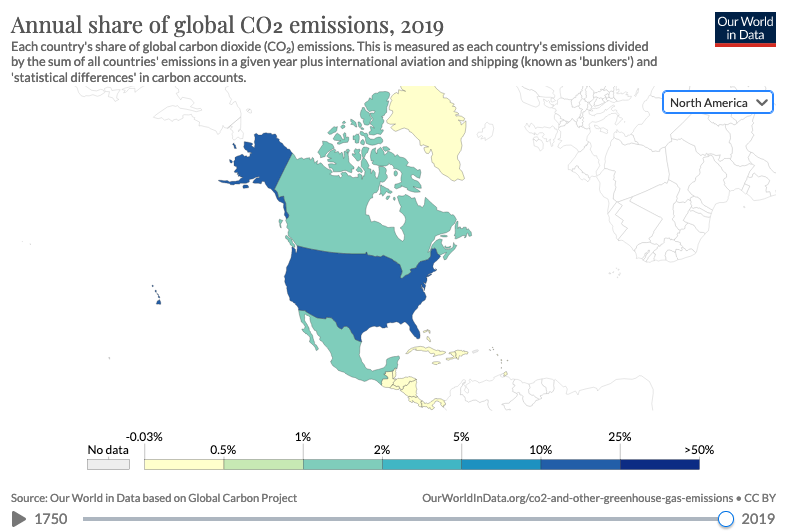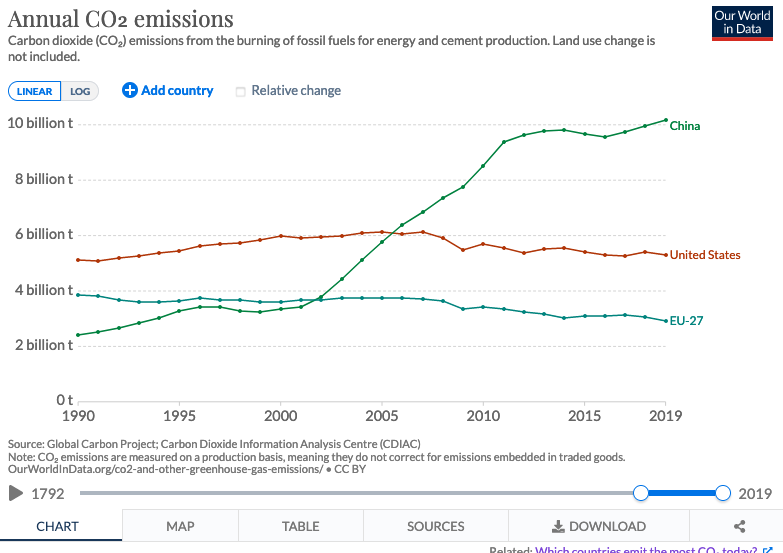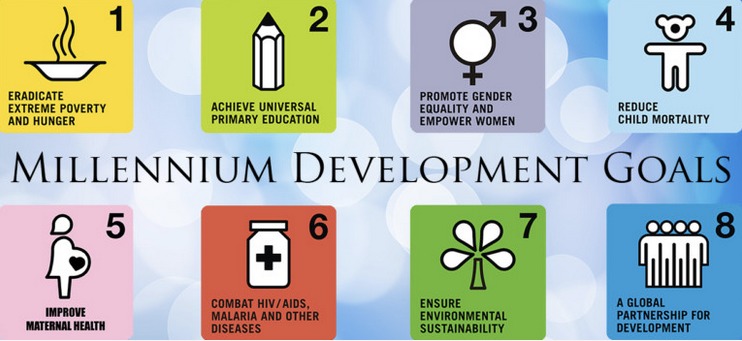The European Union Targets minus 55% CO2 Emission by 2030. What does that globally mean for Shipping? (Part 1)
The global race for reducing CO2 Emission is on. The United States has pledged to zero-emission by 2050, with the power generation sector supposedly reaching this goal in 2035. China has also pledged to achieve zero-emission by 2060. Why ten years later? Simply because in Asia and globally, China is one of the biggest emitters of CO2, and it will probably take longer to change practice.
The European Union has looked into a 55% reduction counting from 1990 till 2030 but wants to be zero by 2050. Now, that is an interesting one "from 1990 till 2030". Why are they not starting to count from 2021 or simply now? What has changed from 1990 till 2020? Very little in terms of CO2 emission, though a lot when it comes to technology change.
The underlying data sources for annual CO2 emissions data come from the Carbon Dioxide Analysis Center (CDIAC) and the Global Carbon Project. The cumulative figures were calculated by Our World in Data based on these annual estimate sources.Though, to answer the technology question, we need to row back a bit. Before the 17 sustainable development goals were established in 2016, with a focus to be completed in 2030, we did have a similar framework, called the Millenium Goals. The Millenium Goals had similar ambitions, although unified in eight universal goals. Fighting Poverty, establishing equality, diminishing HIV/Aids, Malaria… were some areas to focus on, which were successfully targeted, and substantial gain was based. Nevertheless, ecological sustainability was a tough nut to crack, and it has not been resolved during the 15 years. Why? Because in 2000, there was no electric car that could be commercially sold on a large scale. There were no wind turbines that could be built on a large scale. There was no hydrogen-powered ship sailing the oceans. And we did not generate energy on the top of our home's roof with photovoltaic panels. So, one could say that the Millennium Goals have not reached that target. Or you could say they have fostered innovation that would anyway take 30 years to be implemented and deliver results.
Coming back to the beginning of this story, the US, China and Europe, they have only recently committed to their 2030, 2050 and 2060 targets. Why?
Because today, they know that the technology is available to do so. And the race is on for the better to gain an advantage in this technology! The Millemium Goals were the driver to establish this technology. The 17 Sustainability Goals will now help to formalize this part and transform industries.
…read more about how this will impact Shipping in part two of this series.


